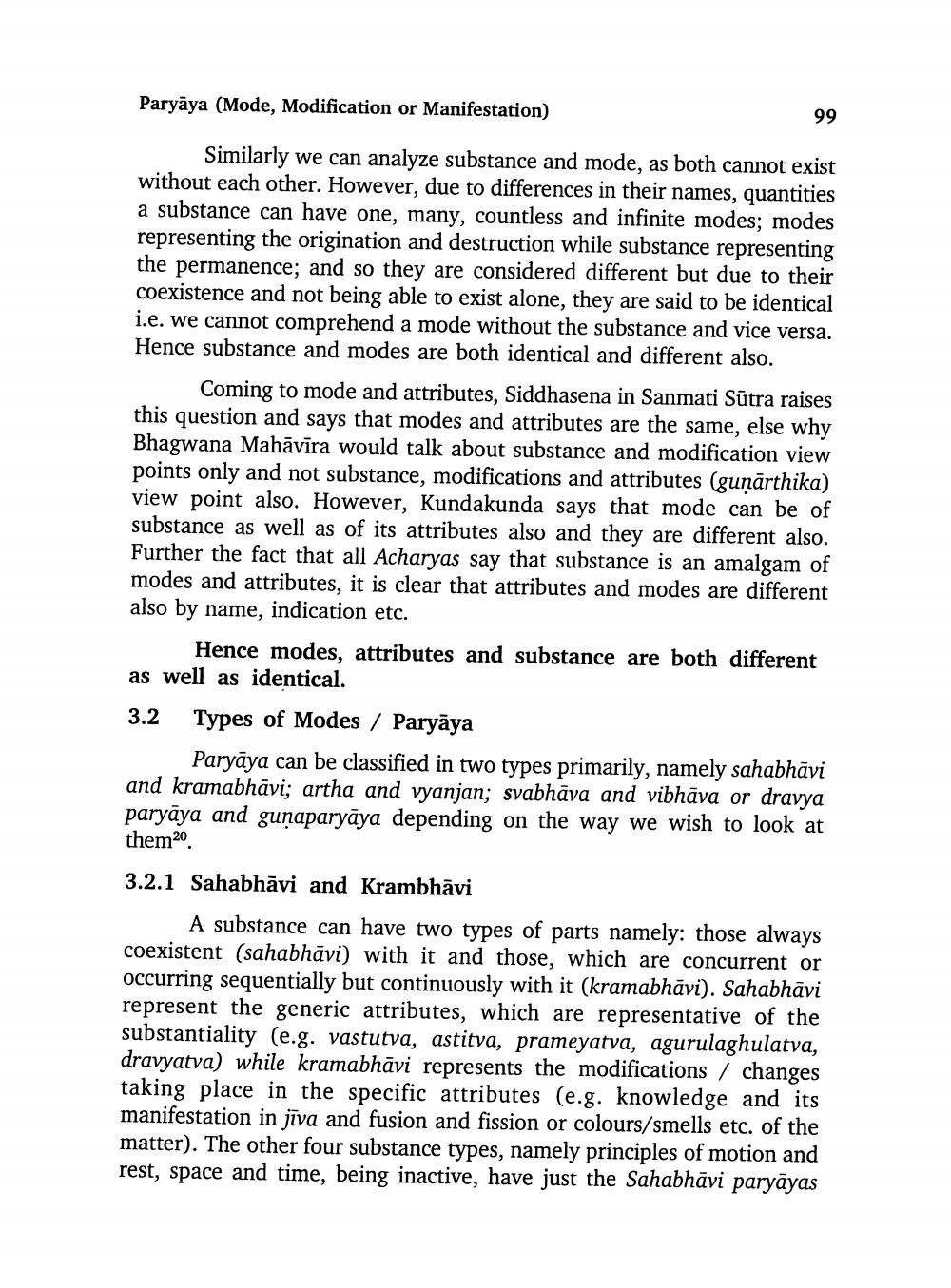________________ Paryaya (Mode, Modification or Manifestation) Similarly we can analyze substance and mode, as both cannot exist without each other. However, due to differences in their names, quantities a substance can have one, many, countless and infinite modes; modes representing the origination and destruction while substance representing the permanence; and so they are considered different but due to their coexistence and not being able to exist alone, they are said to be identical i.e. we cannot comprehend a mode without the substance and vice versa. Hence substance and modes are both identical and different also. Coming to mode and attributes, Siddhasena in Sanmati Sutra raises this question and says that modes and attributes are the same, else why Bhagwana Mahavira would talk about substance and modification view points only and not substance, modifications and attributes (gunarthika) view point also. However, Kundakunda says that mode can be of substance as well as of its attributes also and they are different also. Further the fact that all Acharyas say that substance is an amalgam of modes and attributes, it is clear that attributes and modes are different also by name, indication etc. Hence modes, attributes and substance are both different as well as identical. 3.2 Types of Modes / Paryaya Paryaya can be classified in two types primarily, namely sahabhavi and kramabhavi; artha and vyanjan; svabhava and vibhava or dravya paryaya and gunaparyaya depending on the way we wish to look at them20. 3.2.1 Sahabhavi and Krambhavi A substance can have two types of parts namely: those always coexistent (sahabhavi) with it and those, which are concurrent or occurring sequentially but continuously with it (kramabhavi). Sahabhavi represent the generic attributes, which are representative of the substantiality (e.g. vastutva, astitva, prameyatva, agurulaghulatva, dravyatva) while kramabhavi represents the modifications / changes taking place in the specific attributes (e.g. knowledge and its manifestation in jiva and fusion and fission or colours/smells etc. of the matter). The other four substance types, namely principles of motion and rest, space and time, being inactive, have just the Sahabhavi paryayas




